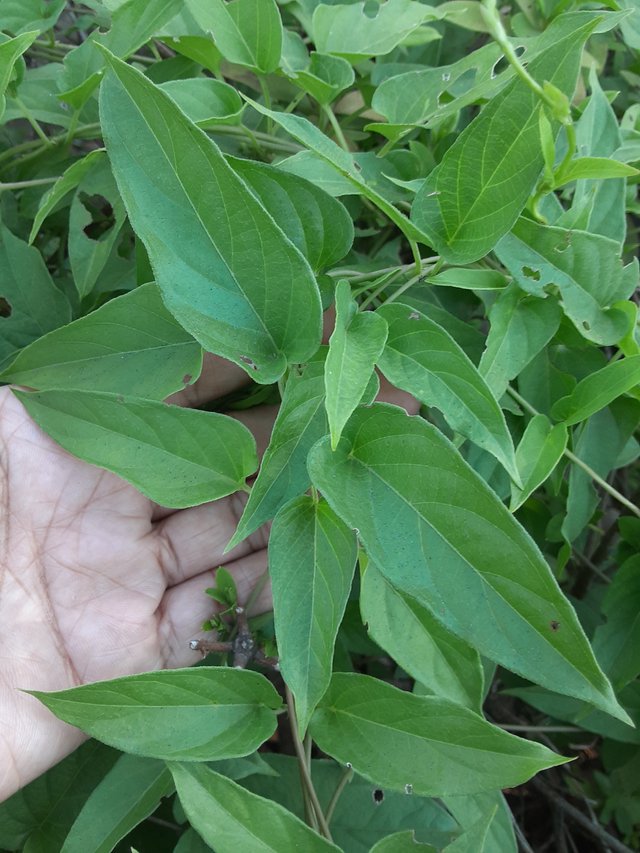Paederia foetida, a poisonous plant with medicinal properties that is used in traditional medicine and cooking

Paederia foetida, also known as stinking chamomile, stinkweed, or gandha prasarini, is a shrub or small tree that is native to tropical and subtropical Asia, Africa, and Australia. It is known for its strong, sulfurous odor, which is emitted when the leaves or stems are crushed or bruised.
The leaves of Paederia foetida have been used in traditional medicine for centuries to treat a variety of ailments, including:
- Diarrhea
- Dysentery
- Fever
- Inflammation
- Jaundice
- Piles
- Stomachache
- Toothache
In recent years, there has been some scientific research to support the traditional medicinal uses of Paederia foetida. For example, studies have shown that the leaves have anti-inflammatory, antioxidant, and antidiabetic properties.
The leaves of Paederia foetida are also edible and can be used in cooking. In Hainanese cuisine, the leaves are ground into flour and mixed with rice to form noodles used in a sweet soup.
It is important to note that Paederia foetida is a poisonous plant if consumed in large quantities. It is also not recommended for pregnant or breastfeeding women. If you are considering using Paederia foetida for medicinal purposes, it is important to consult with a qualified healthcare professional.
Here are some additional information about Paederia foetida:
- The plant grows to be about 1-3 meters tall.
- It has small, white flowers that bloom in the summer.
- The leaves are oval-shaped and have a serrated edge.
- The plant has a strong, sulfurous odor.
- The leaves and stems can be used to make a tea or tincture.
- The plant is also used in traditional Chinese medicine.
Ref.:
 |  |
Upvoted! Thank you for supporting witness @jswit.